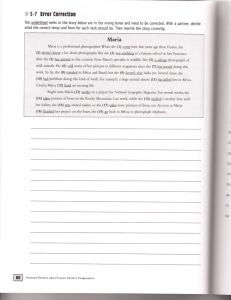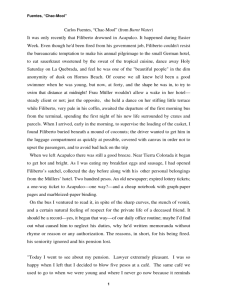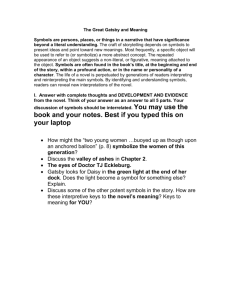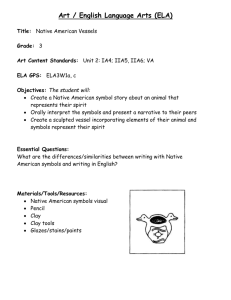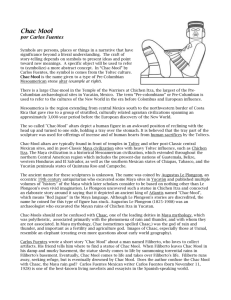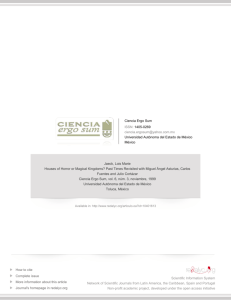“Chac-Mool” by Carlos Fuentes
advertisement
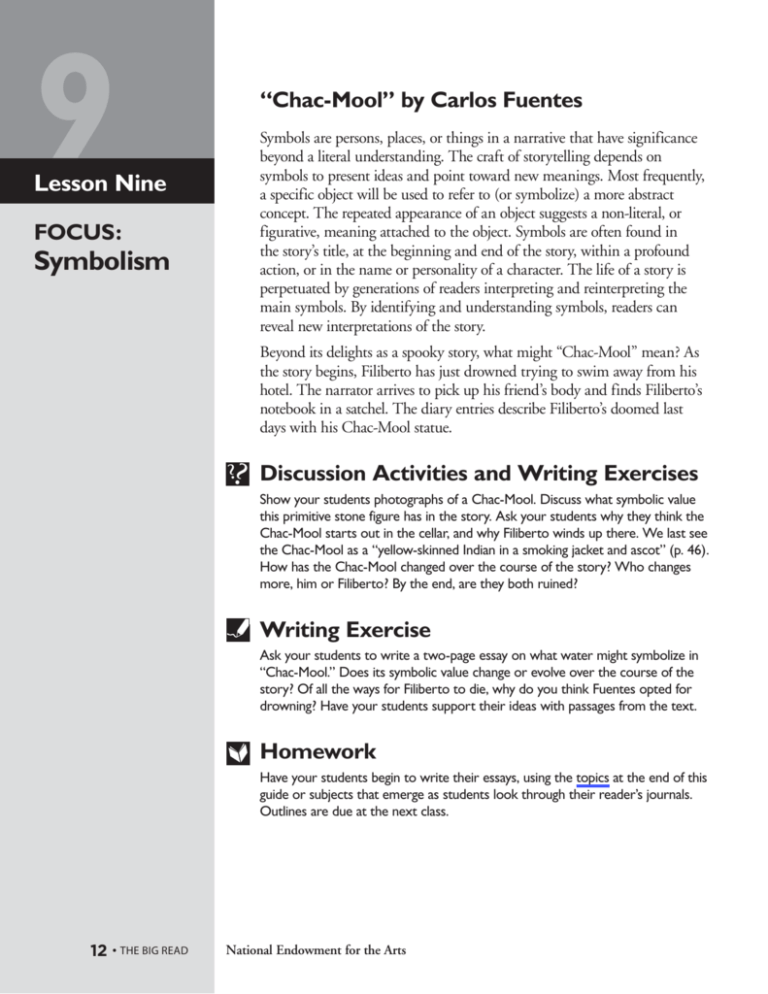
9 Lesson Nine FOCUS: Symbolism “Chac-Mool” by Carlos Fuentes Symbols are persons, places, or things in a narrative that have significance beyond a literal understanding. The craft of storytelling depends on symbols to present ideas and point toward new meanings. Most frequently, a specific object will be used to refer to (or symbolize) a more abstract concept. The repeated appearance of an object suggests a non-literal, or figurative, meaning attached to the object. Symbols are often found in the story’s title, at the beginning and end of the story, within a profound action, or in the name or personality of a character. The life of a story is perpetuated by generations of readers interpreting and reinterpreting the main symbols. By identifying and understanding symbols, readers can reveal new interpretations of the story. Beyond its delights as a spooky story, what might “Chac-Mool” mean? As the story begins, Filiberto has just drowned trying to swim away from his hotel. The narrator arrives to pick up his friend’s body and finds Filiberto’s notebook in a satchel. The diary entries describe Filiberto’s doomed last days with his Chac-Mool statue. ?? Discussion Activities and Writing Exercises Show your students photographs of a Chac-Mool. Discuss what symbolic value this primitive stone figure has in the story. Ask your students why they think the Chac-Mool starts out in the cellar, and why Filiberto winds up there. We last see the Chac-Mool as a “yellow-skinned Indian in a smoking jacket and ascot” (p. 46). How has the Chac-Mool changed over the course of the story? Who changes more, him or Filiberto? By the end, are they both ruined? Writing Exercise Ask your students to write a two-page essay on what water might symbolize in “Chac-Mool.” Does its symbolic value change or evolve over the course of the story? Of all the ways for Filiberto to die, why do you think Fuentes opted for drowning? Have your students support their ideas with passages from the text. Homework Have your students begin to write their essays, using the topics at the end of this guide or subjects that emerge as students look through their reader’s journals. Outlines are due at the next class. 12 tTHE BIG READ National Endowment for the Arts
